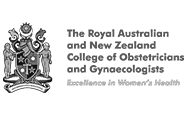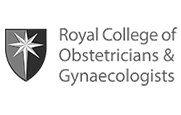Hysteroscopy
What is a hysteroscopy?
A hysteroscopy is a procedure that examines and treats conditions inside the uterine cavity. This is done through a thin telescope introduced from the vagina through the cervical opening, therefore avoiding any incisions on the abdomen. It is often performed to investigate and treat causes of abnormal uterine bleeding and conditions that impair fertility.
When do you need to have a hysteroscopy?
Hysteroscopy is performed for the following situations:
- To investigate abnormal bleeding (heavy, prolonged, intermenstrual and postmenopausal bleeding)
- To investigate causes of infertility
- Exclude presence of uterine cancers
- Removal of retained IUD or insertion of IUD or Mirena device
- Removal of uterine polyps (soft outgrowth of uterine lining)
- Removal of uterine lining as a treatment for heavy menstruation (Hysteroscopic resection of endometrium / ablation)
- Removal of uterine septum (aberrant uterine partition)
- Removal of uterine fibroid (firm rubbery muscular growth arising from uterine wall)
- Removal of scarring inside the uterine cavity (Asherman’s Syndrome)
How is a hysteroscopy carried out?
Hysteroscopic procedures are carried out as a day procedure in hospital under general anaesthesia. The simplest form of hysteroscopy is when the telescope is introduced to simply inspect the uterine cavity to ensure there is no pathology, this is called a diagnostic hysteroscopy. A gentle scrapping of the uterine lining, called curetting, is often carried out to obtain a tissue sample for pathology analysis. When dealing with a larger lesion that needs to be removed or when other interventions are required, a more elaborate instrument called an operative hysteroscope is necessary. An operative hysteroscope has a small channel along the side of the telescope called a working channel, that allows the introduction of thin instruments to perform delicate tasks inside the uterus.
Advanced hysteroscopic procedures
Hysteroscopic resection of endometrium / Ablation
- Menstrual loss comes from the shedding of the uterine lining and ablation is a therapeutic procedure to remove this lining to treat heavy menstrual loss. Ablation aims to remove the full thickness of the uterine lining plus a superficial portion of underlying uterine muscle.
- The goal is to reduce the menstrual loss to a manageable level, not to have no periods altogether. A large proportion of patients end up having minimal loss during their future periods.
- In some instances, it can result in worsening of period pain, particular when adenomyosis is present.
- Ablation should only be carried out when there is no further plan for pregnancy, however it is not contraceptive.
- Following the procedure, there can be 3-4 weeks of bloodstained discharge.
Hysteroscopic resection of fibroid
- To remove a submucosal fibroid, a hysteroscopic resectoscope is required. A resectoscope can have a wire loop attachment that can function as an electrical knife.
- Submucosal fibroid of up to 5cm can be resected hysteroscopically.
Hysteroscopic resection of uterine septum
- A uterine septum is a congenital uterine partition that has failed to resolve during embryological development and can increase the chance of miscarriage.
- It is rarely symptomatic and usually diagnosed following a miscarriage or on a routine pelvic ultrasound.
- Treatment by hysteroscopic resection of uterine septum aims to reduce the chance of miscarriage. The condition does not prevent a woman from falling pregnant and uncomplicated pregnancies can still occur without treatment.
- Resection of uterine septum is usually reserved for those who have had miscarriages that may be attributed to uterine septum
- If a woman has no plan for pregnancy, no treatment is required.
Hysteroscopic division of uterine adhesions (Asherman’s Syndrome)
- Asherman’s syndrome is condition where scar tissue has formed inside the uterine cavity. This can lead to light or no menstrual flow, pain and impaired fertility.
- Causes of Asherman’s syndrome include uterine procedures particularly around the time of pregnancies such as postpartum curetting for retained placenta or surgical termination. The risk of developing Asherman’s syndrome is particularly high if there is infection at the time.
- Asherman’s syndrome is graded based on the proportion of the uterine cavity affected.
- Asherman’s syndrome can be diagnosed on regular pelvic ultrasound but a specialised ultrasound procedure called sonohysterogram, where fluid is instilled into the uterine cavity, provides better visualisation and assessment.
- Treatment of Asherman’s syndrome is indicted when there are fertility issues or pain. Treatment consists of hysteroscopic division of the uterine scar tissue to restore the uterine cavity. At the end of the procedure, anti-adhesion agent or a small balloon may be placed in the uterine cavity for a short period of time to minimise scar recurrence. A course of Oestrogen is given to enhance endometrial healing, as the endometrial lining is sensitive to Oestrogen. Following a withdrawal bleed with a short course of progesterone, the uterine cavity is re-checked with another sonohysterogram, at which time minor, early scar formation is likely to be broken down by the distension of the cavity during this ultrasound procedure. In severe cases of Asherman’s syndrome, surgery may need to be repeated.
What to expect after a hysteroscopy?
Following a diagnostic hysteroscopy or removal of polyps, it is common to experience minor vaginal bleeding for a few days. The duration of bleeding can be longer following an ablation, where the uterine lining is resected, and can last up to 3-4 weeks. If a Mirena was inserted at the time, it is normal and expected to have light intermittent bleeding for 3-4 months. It is not uncommon to experience some mild pelvic discomfort for a few days, which will subside. Anti-inflammatory painkillers such as Nurofen, commonly used for period pain, can alleviate the discomfort. Most women are able to return to work the following day, but some may need an additional day.
The timing of your next period may or may not be affected. You should use pads instead of tampons to minimise the chance of infection. One should avoid baths, swimming and sexual intercourse for 1-2 weeks following a hysteroscopy or until bleeding stops.
Complications from hysteroscopic procedures are uncommon and depend on the type of procedure carried out. In rare instances, a perforation could occur where the hysteroscope or another instrument may be placed through the uterine wall. There is usually no long-term implication as the uterine wall heals fully in most cases.
If you experience excessive bleeding, increasing pain, fever or offensive discharge, please contact your doctor for review.
Follow up after a hysteroscopy
Postoperative follow up will depend on the procedure carried out, ranging from simply calling for the pathology result in 1-2 weeks, to a follow up appointment in 4-6 weeks for discussion of the procedure and assessment of treatment outcome.















